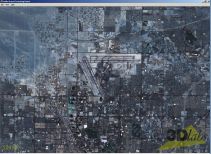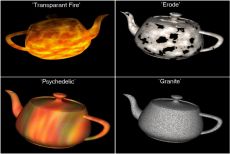Drivers
Like nVIDIA (and now ATi) 3Dlabs have taken to the route of naming their drivers, to which 3Dlabs have hit upon Fusion for Wildcat VP's drivers.
Being a new architecture 3Dlabs have done a clean sweep of their code and started afresh which has enabled them to cut down their OpenGL ICD from 2.5MB to 0.75MB. The natural parallelism of the P10 architecture should also mean that future chip generations will also be easier to support since they will ostensibly be the same driver.
All the common driver options you would expect to see in driver control applets these days are present, as well as a few less common ones. For instance, there is a is a control panel for the the dual screen OpenGL modes which, under Win 2000/XP, allows OpenGL acceleration on two monitors and the control panel allows different refresh rates for different specification monitors and also different colour depths. Although DirectX is not likely to be the primary target for for Wildcat VP 3Dlabs have provided an control panel for it, again with many of the common features you would expect; should someone wish to run games with this then they are likely to be able to.
with Two Accelerated OpenGL Windows
3Dlabs are also developing a 'WinMan' suite of desktop usability tools, similar to the types of controls seen with nVIDIA's nView. Multi-monitor features such as maximizing desktop across both screens, automatic window docking to stop windows from spanning across two monitors, and windows positioning memory for applications that don't 'remember' their locations well. Features also useful to single users such as multiple desktops, shortcuts for WinMan actions, per application configurations, user profiles and 'mouse find' functionality. WinMan tools are currently in beta states and are due to be fully supported and available soon after the release of the boards.
During my time with a board on the 'Advanced' driver control panel I had the opportunity to play with an interesting slider which enables the user to bias the configuration of the chip between geometry performance and texture (fill-rate) performance to best suit the particular application being used.

I asked if this just altered buffer sizes or whether there was other things going on as well and 3Dlabs stated that "It's safe to say there's more than just buffer resizing going on." which could allude to the different clock-speeds within the chips pipeline mentioned earlier. This raises the possibility that this slider may actually be able vary to the clock-speeds of the geometry and rendering ends of the pipeline; bias it towards 'Geometry' and the clock-speed of the geometry engine will be increased, decreasing the raster pipe speed, bias it towards 'Texture' and the opposite would happen. Although 3Dlabs were being very 'non-specific' as to exactly what was occurring here during seeing some benchmarks run I did get to put this to the test - with Quake3 (which isn't know for its geometry complexity these days, nor its used of on-chip geometry processing) when moving the slider from full 'Geometry' all the way to full 'Texture' on the slider it change the final FPS number by about 125% faster. I think it would be safe to say there's more than just buffer resizing going on there!
Creative Connection
"This is all well and good" you may be thinking "but what if I want a gamers board?". Well, for the gamers market that's where Creative comes into play, they didn't, after all, purchase 3Dlabs for the workstation market; Creative are interested in volume and that means the consumer desktop market.
Both Mr Sim, Creative Labs Chairman and CEO and Hock Leow, Creative Labs CTO and now 3Dlabs CEO, were present at the press launch to give us an impression of where Creative will be taking the 3Dlabs designed technology within the consumer space. I say to give us an 'idea' because their plans are not concrete yet, and may not necessarily even relate to the P10 chips that 3Dlabs have showcased.
One thing that Creative are keen on is getting a product to the 'SoundBlaster price point', i.e. roughly about $99. At that price Creative sell bucket loads of SoundBlasters and they want to emulate that in the graphics market as well. They say that they will achieve this over time, however they don't expect to do it immediately; of course Creative have very good OEM relationships via their SoundBlaster cards and will likely be pursuing video deals alongside sound deals, and the more volume that can be attained through routes such as these the quicker it is likely to be that they are able to achieve their goal.
Although Creative state they are keen to reach this low price level, which would also tend to indicate low performance, they do acknowledge that technical excellence and high end performance often push more sales through to the low end and so are keen to fill all consumer market niches. Again, this doesn't necessarily mean that they will do this by bringing P10 chips into the consumer market, it may mean 3Dlabs designing a part more tailored towards Creative's specification. However the scalable nature of the architecture should make this a slightly easier task - they may design a part with fewer Geometry arrays and greater pixel/texture arrays to create a chip more in tune with the fill rate demand of games.
In the interim its not 100% clear exactly what Creative will be doing with
3Dlabs technology, and they may even continue producing boards for other chip
vendors to meet market segments that their own technology currently does not fit
into, while more parts are being readied. One thing that did become evident to
me though, was that Creative clearly see this as a long term venture.



